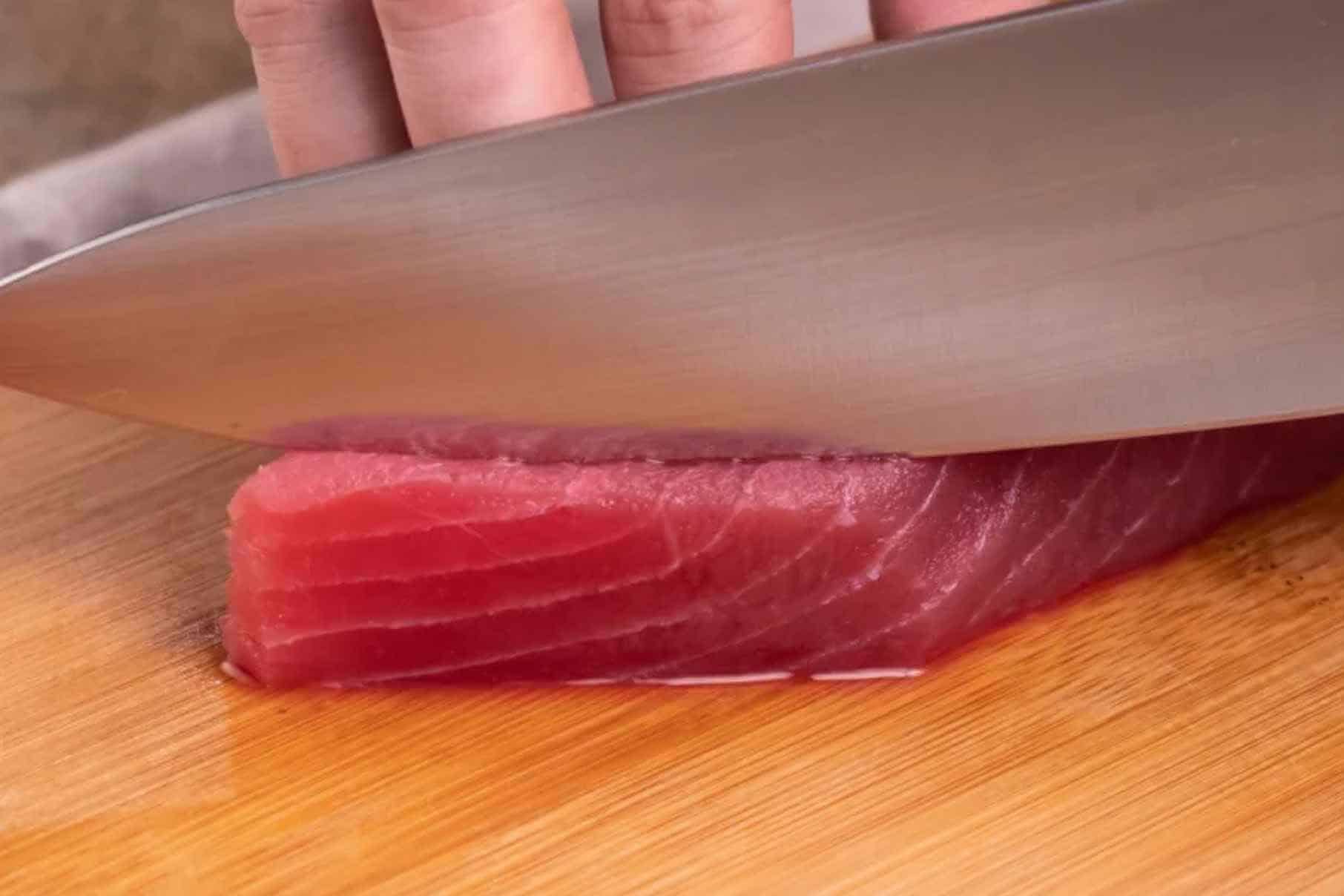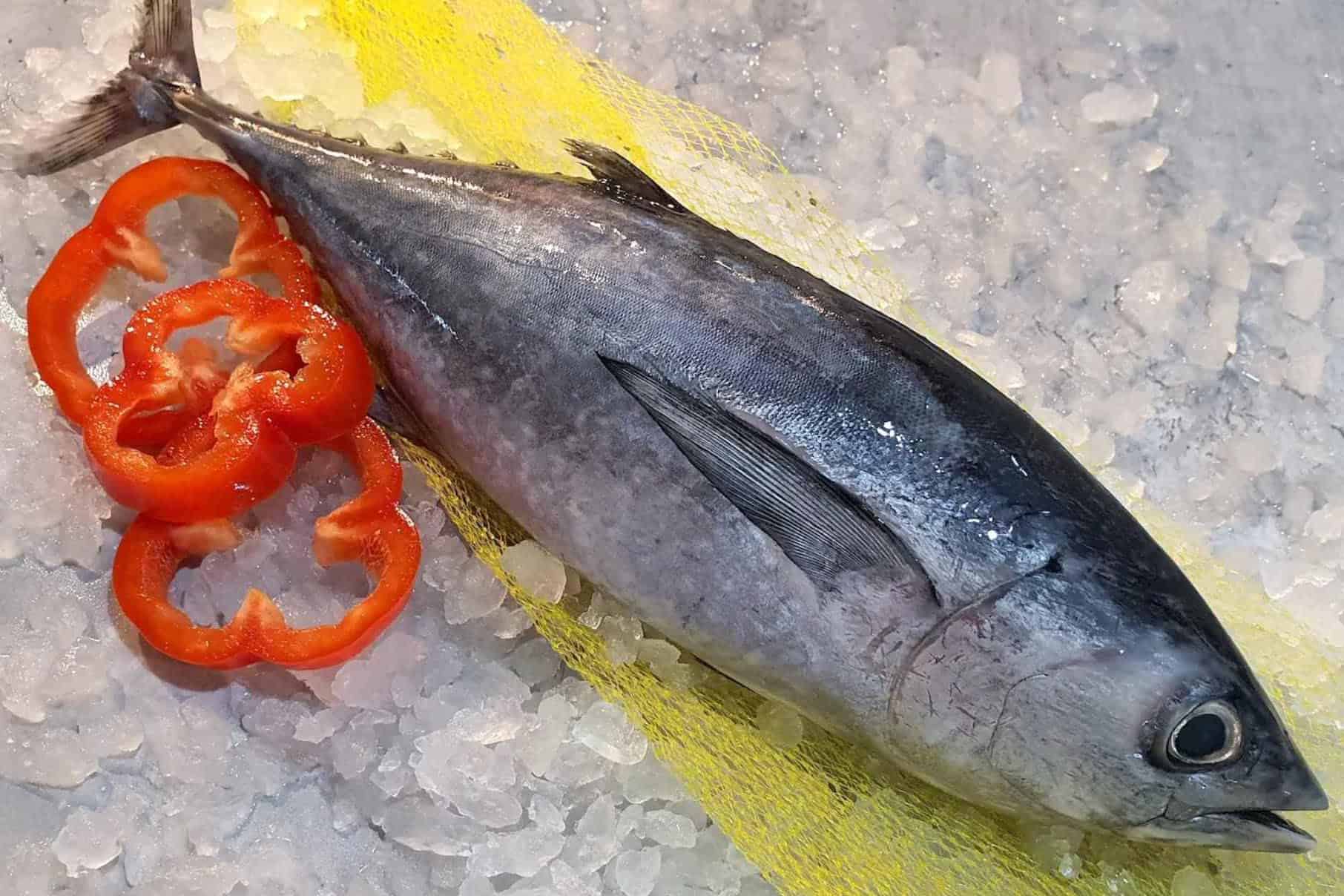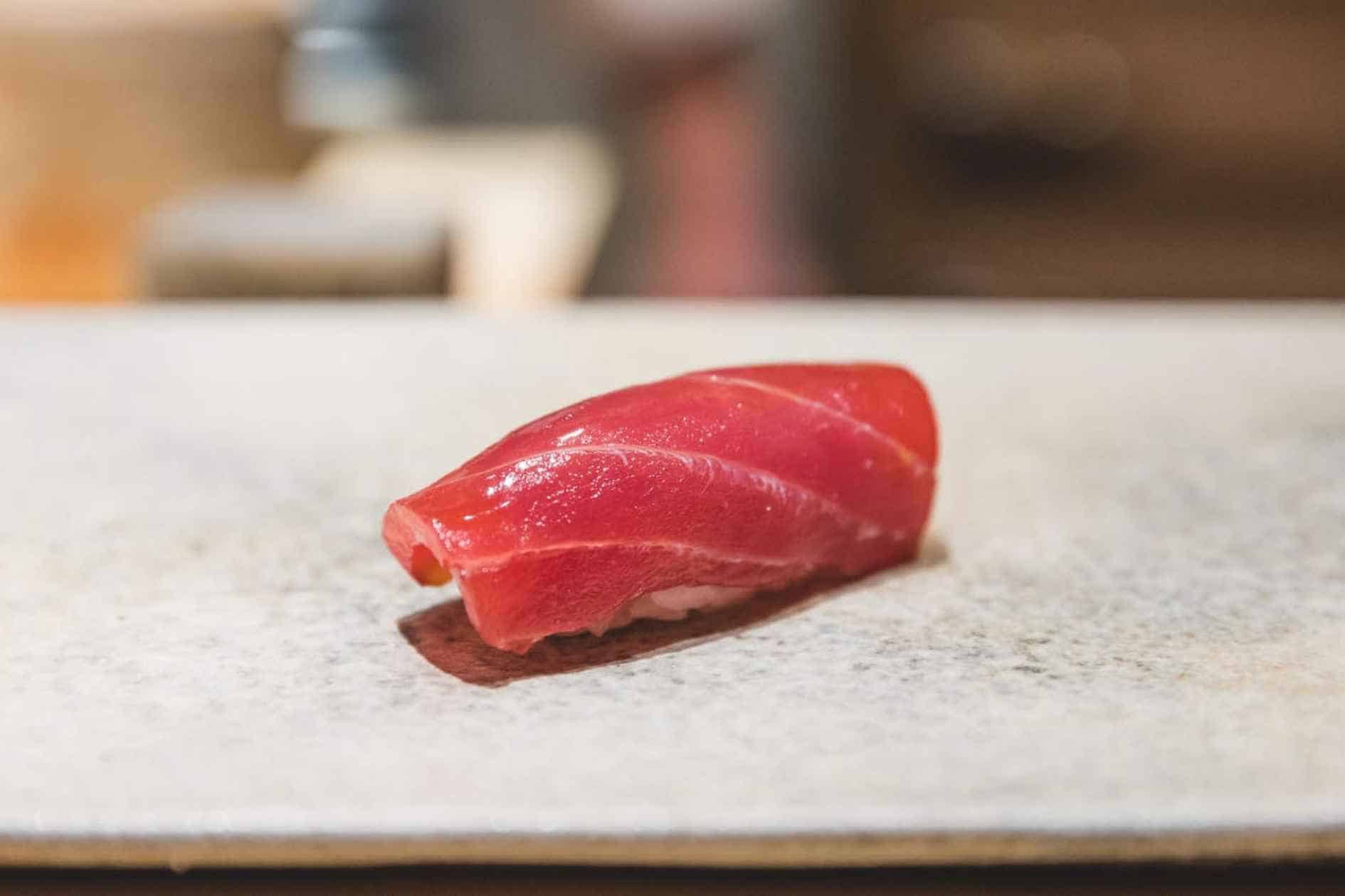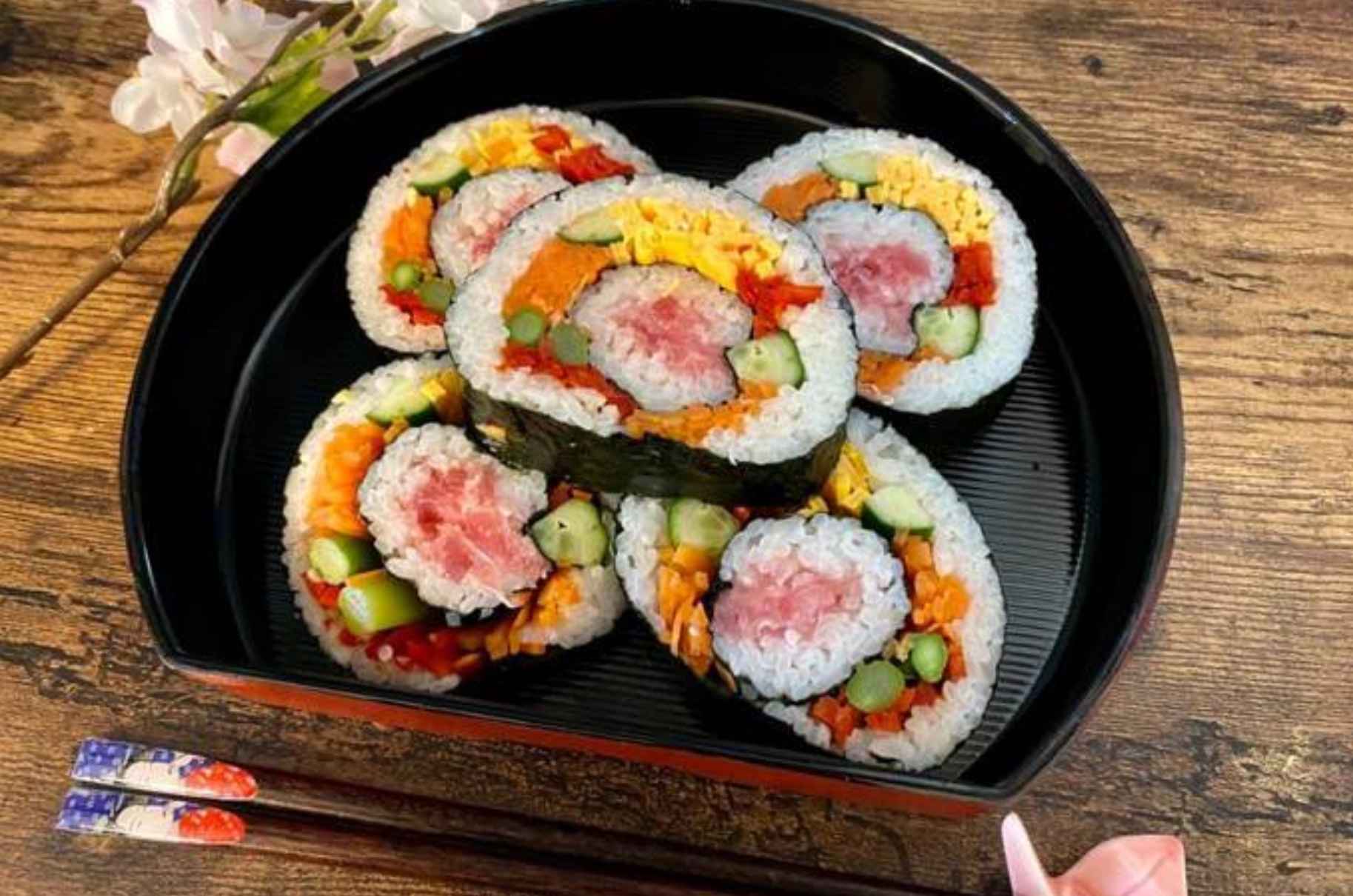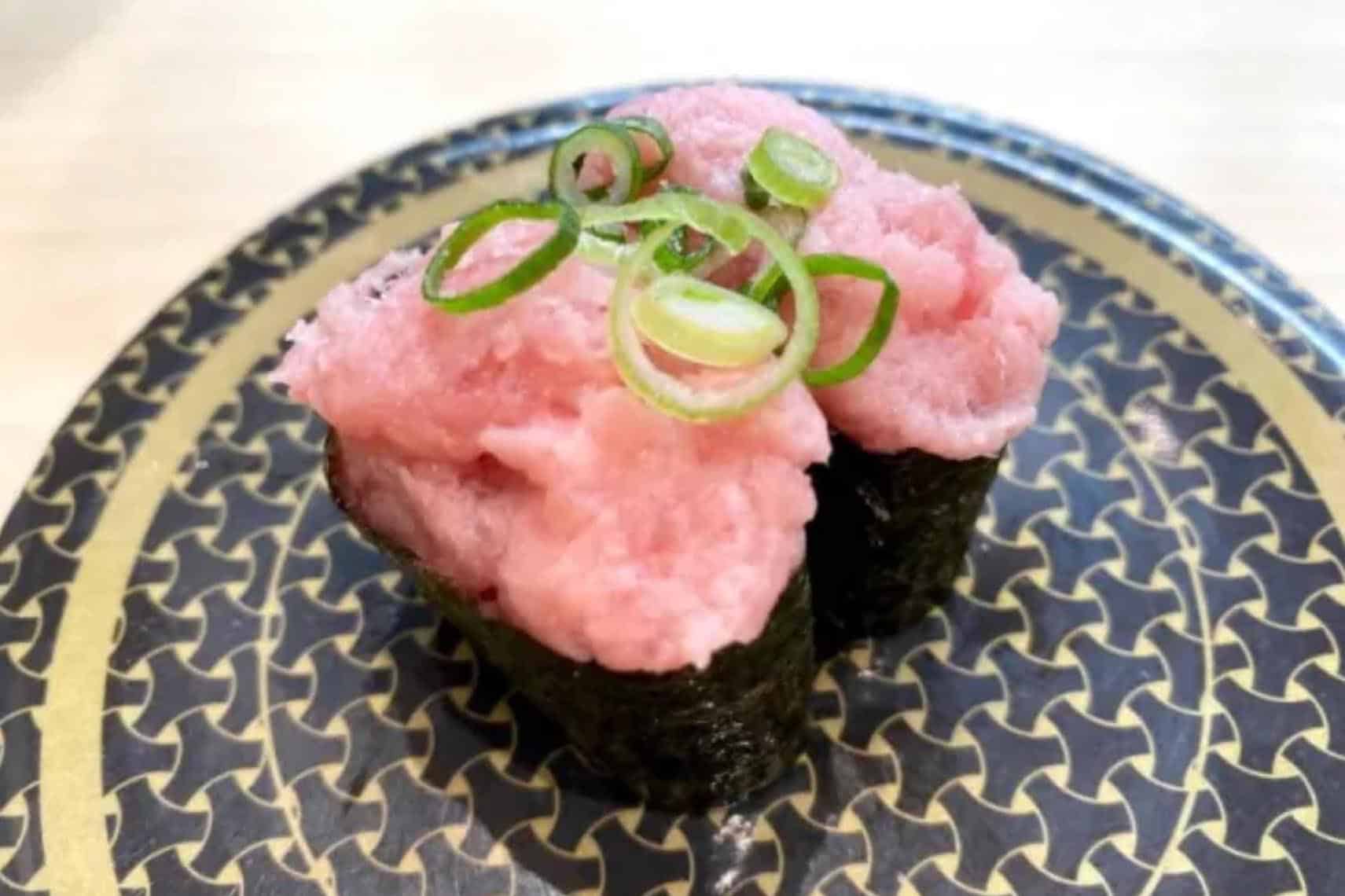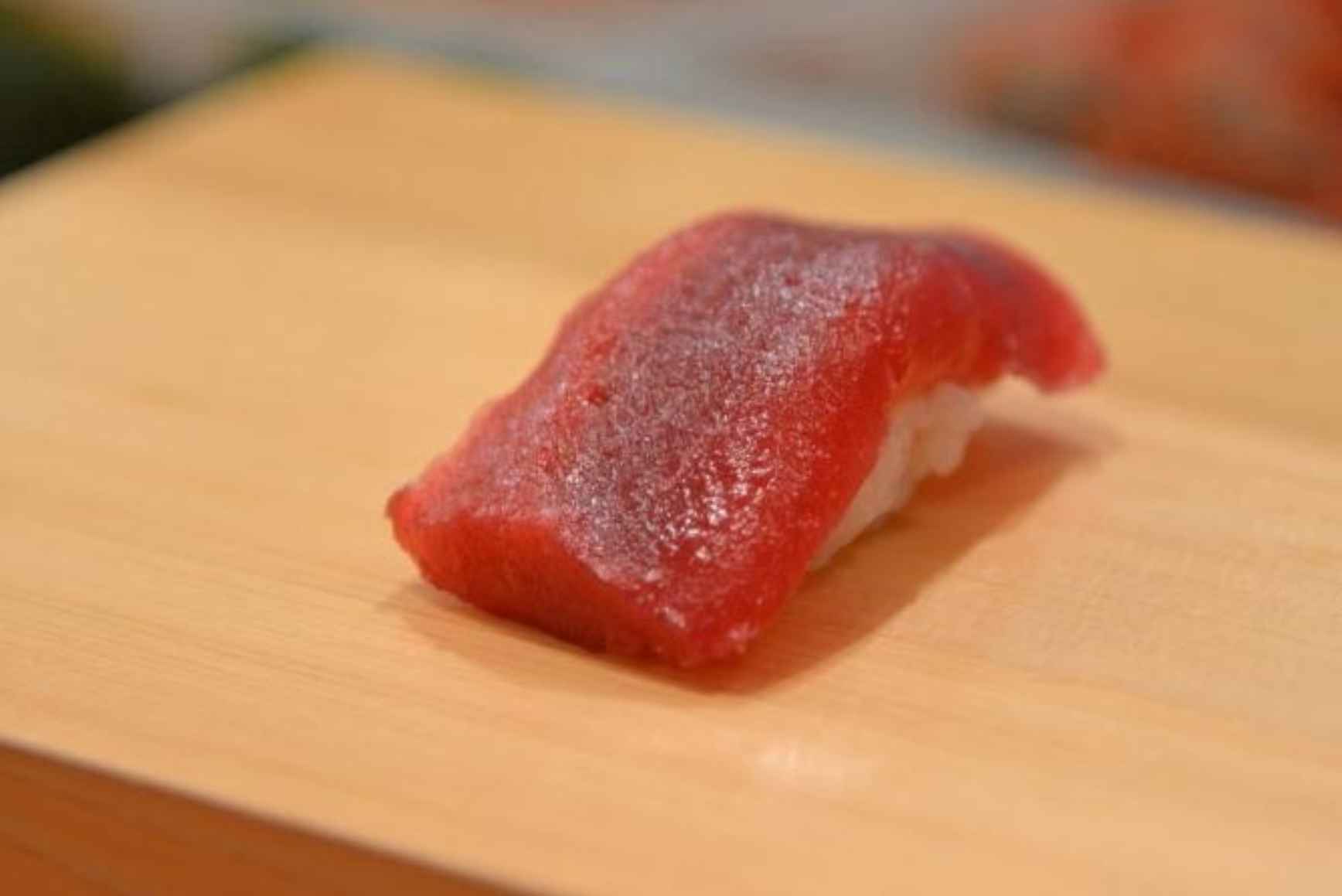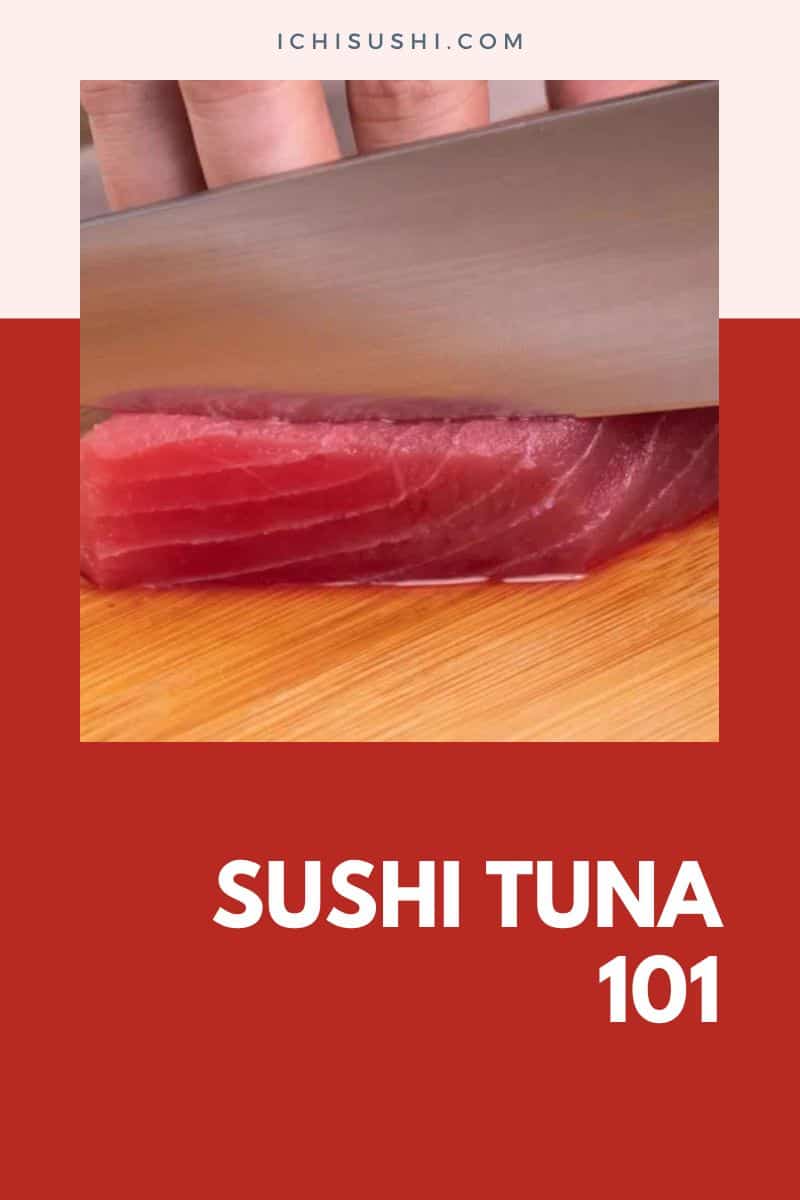Tuna is among the most popular ingredient for sushi across the world! But do you know the intricacies behind this famous dish? Well, we are here to introduce you to tuna sushi with this guide!
What is Tuna Sushi?
Tuna sushi is a catch-all term that refers to sushi that features tuna as its primary ingredient. It can range from toro sushi to tuna maki rolls.
There are many reasons why this type of sushi is trendy in the market. First, tuna is very versatile when it comes to sushi. You can eat it like a nigiri or mix it in rolls with fresh cucumbers and carrots.
Not only that, but tuna meat is also reasonably cheap and accessible worldwide. So, many sushi restaurants make this fish a staple in their menu.
A Brief History of Tuna Sushi
Although popular today, you might be surprised to know that tuna was not desirable in Japan during the old times. Especially the famous toro or the belly cut of the fish, which we commonly associate with sushi today.
una tastes metallic, so manual laborers and the lower class primarily consumed it. Many even pickled or marinated the fish just to eliminate the taste.
Then, in the 1800s, it has become another choice for sushi vendors. However, its place in the Japanese culinary culture stays mainly the same.
Tuna finally had some positive light in the 1900s. Although tuna has become less of a lower class of fish, the Toro cut remained the most undesirable part of the fish. It even became a prime ingredient for cat food.
After World War II, when the US occupied Japan and introduced its Western culture, the Japanese began adapting to a more Western dietary habit. Including the intake of red meat along with fatty cuts! This liking then led to an increased acceptance of tuna and toro in Japan and the Western world in later years.
Preparing Tuna for Sushi
Preparing tuna for sushi starts from the catch of the fish itself. Tuna is maintained in its fresh state as the fish’s red meat can have bad flavors as it deteriorates.
Then, sushi restaurants and street vendors will use fillet cuts of this fish. The toro, or the belly part, is the most sought-after cut of tuna for sushi. So, most use this cut for sashimi or raw tuna nigiri.
When selecting fresh tuna for sushi, sourcing suppliers and markets renowned for their quality seafood is essential. Additionally, it is beneficial to examine the surface of the seafood closely, including its color, texture, and marbling, to ensure its pristine condition. You should also smell the tuna; it should give off a clean scent that conveys freshness from the ocean.
Finally, to adequately prepare sushi dishes, be sure you are familiar with the type and cut of tuna preferred. Examples include toro, chu-toro, and akami —all of which contain varying flavors depending on style.
Different Tuna for Sushi
As established earlier, tuna is pretty standard throughout the world. So, here is a breakdown of the usual tuna for sushi, where you can find it, and its range of sizes.
| Type of Tuna | Region | Size |
| Pacific Bluefin Tuna (Taiheiyu Kuro Maguro) | · Throughout Pacific Japan | 400kg |
| Atlantic Bluefin Tuna (Taiseiyu Kuro Maguro) | · Throughout Japan
· USA and Canadian East Coast · Mediterranean Sea |
400kg |
| Southern Bluefin Tuna (Minami Maguro) | · Throughout Japan
· Australia and New Zealand |
250kg |
| Bigeye Tuna (Mebachi Maguro) | · Throughout Japan (Kyushu and Shikoku) | 180kg |
| Yellowfin Tuna (Kihada) | · Osaka
· Hawaii (Ahi) |
50 to 100kg |
| Albacore (Binnaga Maguro) | · Tohoku, Japan
· Tropical Region |
40kg |
Pacific bluefin tuna is the pinnacle of the sought-after sushi taste. Most premium tuna sushi is made from this specific type. It’s due to its incredible fattiness and delicious meat.
But it also came with a price. Pacific bluefin tuna can cost up to $80 to $600 a kilo, depending on the part. Consider this is the price in the Toyosu market, and the cost of international shipment is not included.
This is due to the rarity of the tuna. It’s considered near threatened, and fishing laws now limit harvesting this type.
The next one is the Atlantic bluefin tuna which is the premium variant that the USA and the whole of North America have. It’s very akin to the Pacific ones; many even confuse the two.
Southern bluefin or Indian tuna is a common alternative in the summer. As the Pacific bluefin has a less enticing taste during warm weather.
Bigeye tuna is mainly used for lower-tier sushi and canned tuna. It’s also among the cheapest option and easier to find.
Yellowfin or ahi tuna in Hawaii is also another less pricey variant. But, it contributes more to Japanese cuisine than the bigeye as it has a very refreshing taste.
And lastly, Albacore is one of the most popular tuna meat you’ll find anywhere. It’s also very versatile with sushi. This is due to its heat-resistant meat. The fish stays soft even when cooked, so it’s excellent for teriyaki sushi.
What is Tuna Grading?
Got a question about grading tuna? It’s easy to figure out! Tuna is rigorously evaluated before being categorized into one of four grades. Qualities such as initial appearance, size and shape, color, texture, and fat content are all assessed for each category.
| Tuna Grade | Features |
| Grade 1 | · High-fat content
· Bright red, shiny, and translucent. · Should be 60lbs or higher · The skin should be without a scratch, especially along the cuttings · Fine and smooth texture |
| Grade 2+ | · Good fat content
· Less glossy than Grade 1 · Firm meat |
| Grade 2 | · Lesser fat content
· Softer meat |
| Grade 3 | · More opaque and noticeable loss of gloss
· Less firm · Some imperfections in the skin and meat |
Grade 1 tuna is the highest grade this fish can get. Sushi made from this tuna has a premium mark and higher quality. For it to be qualified as this type of tuna grade, it might have the best texture, color, and excellent fattiness.
Grade 2+ Tuna has made great strides since the 1980s, becoming a popular choice for households across the United States! Noted for its simple yet flavorful variations, Grade 2+ Tuna offers diners an option that falls between the two grades.
But the quality of Grade 1 and Grade 2 tuna can vary greatly; thus, Grade 2+ tuna was introduced. This way, customers can find affordable and delicious dishes in just the flavor profile they’re looking for.
Grade 2+ tuna has a shorter and thinner shape with less fat, giving it a wet and smooth yet slightly lean texture. Its color is still red. However, it may have some indications of fading colors from the top of the loin near the skin.
Furthermore, tiny scales and skin imperfections are sometimes seen. Additionally, the fins should not be broken with any significant wounds or scars.
The next grade is Grade 2 tuna. Many restaurants choose this particular type of tuna for dishes that will be cooked as it is a cost-effective alternative to Grade 1. It should be noted, however, that this grade of tuna is not typically seen raw on sushi menus, even in lower-end establishments.
Lastly, Grade 3 cooking grade tuna typically becomes a brown or pale greenish color when it is nearing readiness. This is not commonly used for tuna sushi, especially in the high-end market.
Different Types of Tuna Sushi
Tuna is used with many sushi, and here are some of them:
Tuna Nigiri
Tuna nigiri has a wide range of tuna varieties. You can find different types, depending on where you are in the world or the kind of sushi restaurant you’re in.
In its essence, tuna nigiri is sushi with raw or steamed tuna on top. It doesn’t have any nori wrap or other ingredients. If you want the natural, fresh, and fatty taste of tuna, this is the best type of sushi for you.
One of the most common types of tuna nigiri is the bintoro or Albacore nigiri. It’s often found in conveyor belt sushi restaurants, characterized by its light pink color.
Tuna Maki Sushi
Maki or sushi roll is the most common way to eat tuna sushi! It’s often cooked and mixed with other ingredients such as cucumber, carrots, and sesame seeds. This is the many enjoy tuna sushi, especially in the USA.
Tuna Temaki Sushi
Tuna temaki is more common among street vendors in Japan. It features a cone-shaped nori wrap where the tuna, rice, and other ingredients sit.
Tuna Kazari Maki Sushi
A kazari maki is an innovative and ornamental twist to maki sushi. Rather than having the nori wrap be the cover for the roll, the rice replaces it in kazari. Then, the tuna will go on top, making for a very aesthetically pleasing presentation.
Negi Toro Gunkan
Tuna gunkan is very much akin to the traditional nigiri, with the exception of a nori wrap around the sushi. It’s also often paired up with some salmon roe or uni in between the fish and rice.
Tips for Identifying High-Quality Tuna Sushi
To determine if your tuna sushi is of high quality, consider a few factors. First, the color should be vibrant and deep red – avoid sushi with dull or brownish hues, as this often indicates lower-grade tuna.
The texture should feel firm but not mushy when bitten. Look for fine lines of fat, known as marbling, contributing to added flavor and smoothness.
Additionally, there should only be an oceanic smell—if the fish has a pungent scent, it likely isn’t fresh. Lastly, consider where the tuna comes from; it’s more likely to be top-grade if it comes from reputable and sustainable fisheries.
Experiencing Tuna Sushi
Everyone has a unique way of eating and enjoying tuna in their own way. That said, here are some easy tips you can use as a guide.
How to properly enjoy tuna sushi?
Most traditional sushi eating starts with mild fish and ends with a more savory flavor. Tuna is mainly a choice in the middle of this sushi course. So, try to pair it with some milder courses and avoid eating it after heavy sushi.
What are the common food pairings for Tuna Sushi?
If you don’t have any pairing for your tuna sushi, here are some easy-to-find ones for you:
- Gari (Pickled Ginger)
- Ginger Ale
- Lemonade
- Miso Soup
- Soy Sauce
For an easy pairing, find a nice balance to the fatty meat of tuna. Try out some citrus and acidic pairs to balance the flavors.
In Conclusion
With this comprehensive article, you now know the ins and out of tuna sushi. So why not give it a try? You can check out some of our tuna sushi recipes here!

Hiroshi Nakamura, a Tokyo-born sushi chef turned US-based writer and critic, is the voice behind ichisushi.com, blending traditional sushi wisdom with modern insights.
